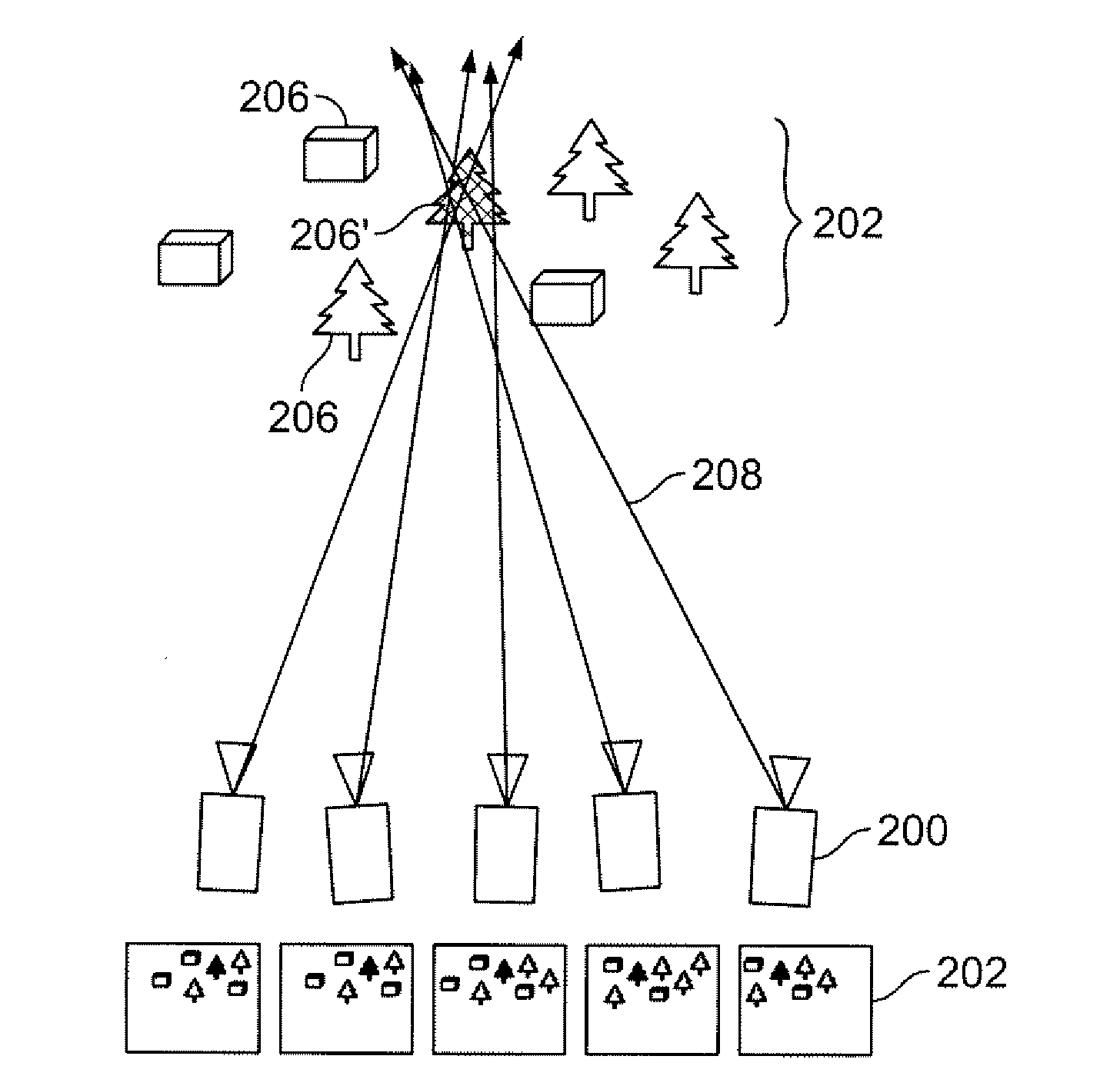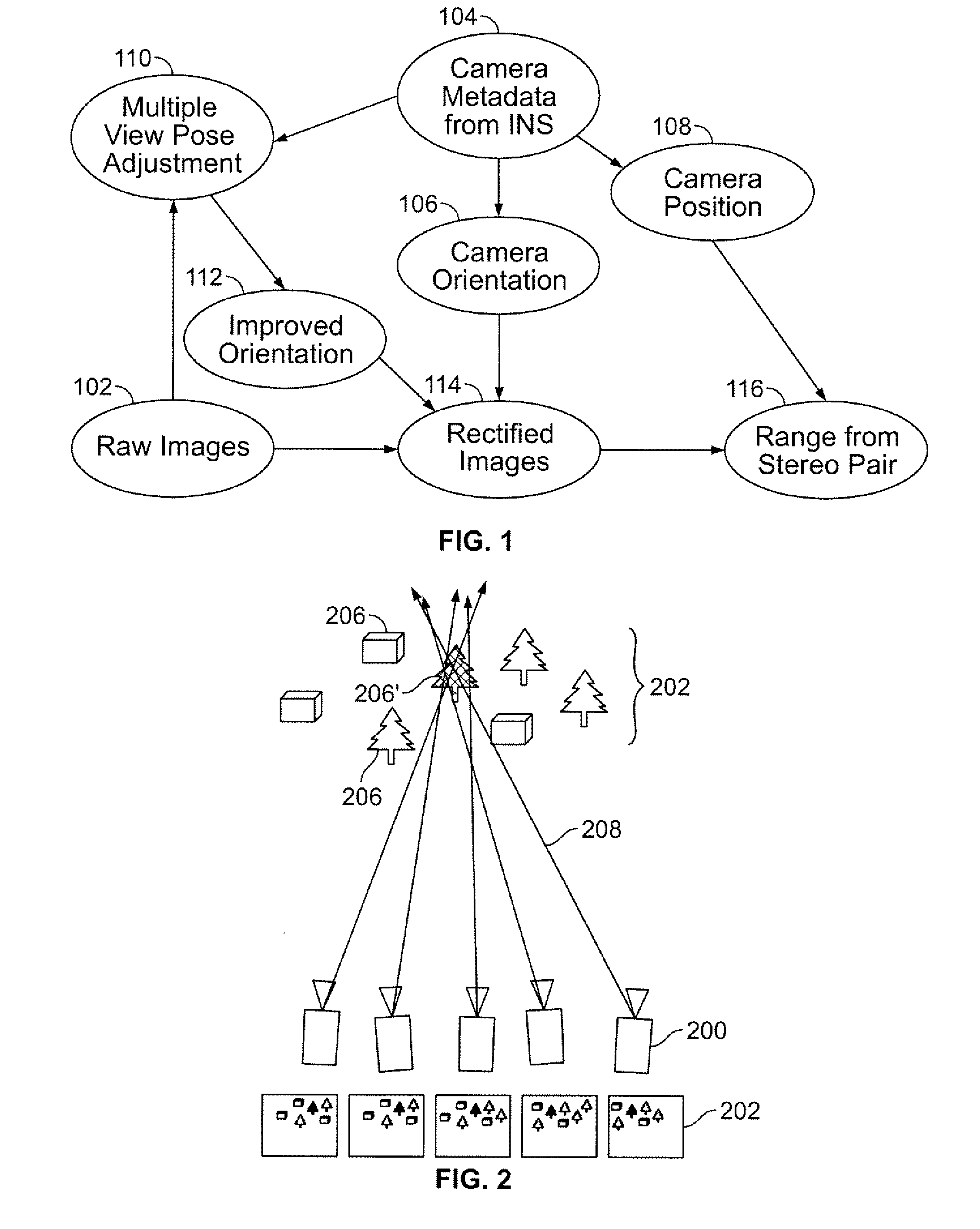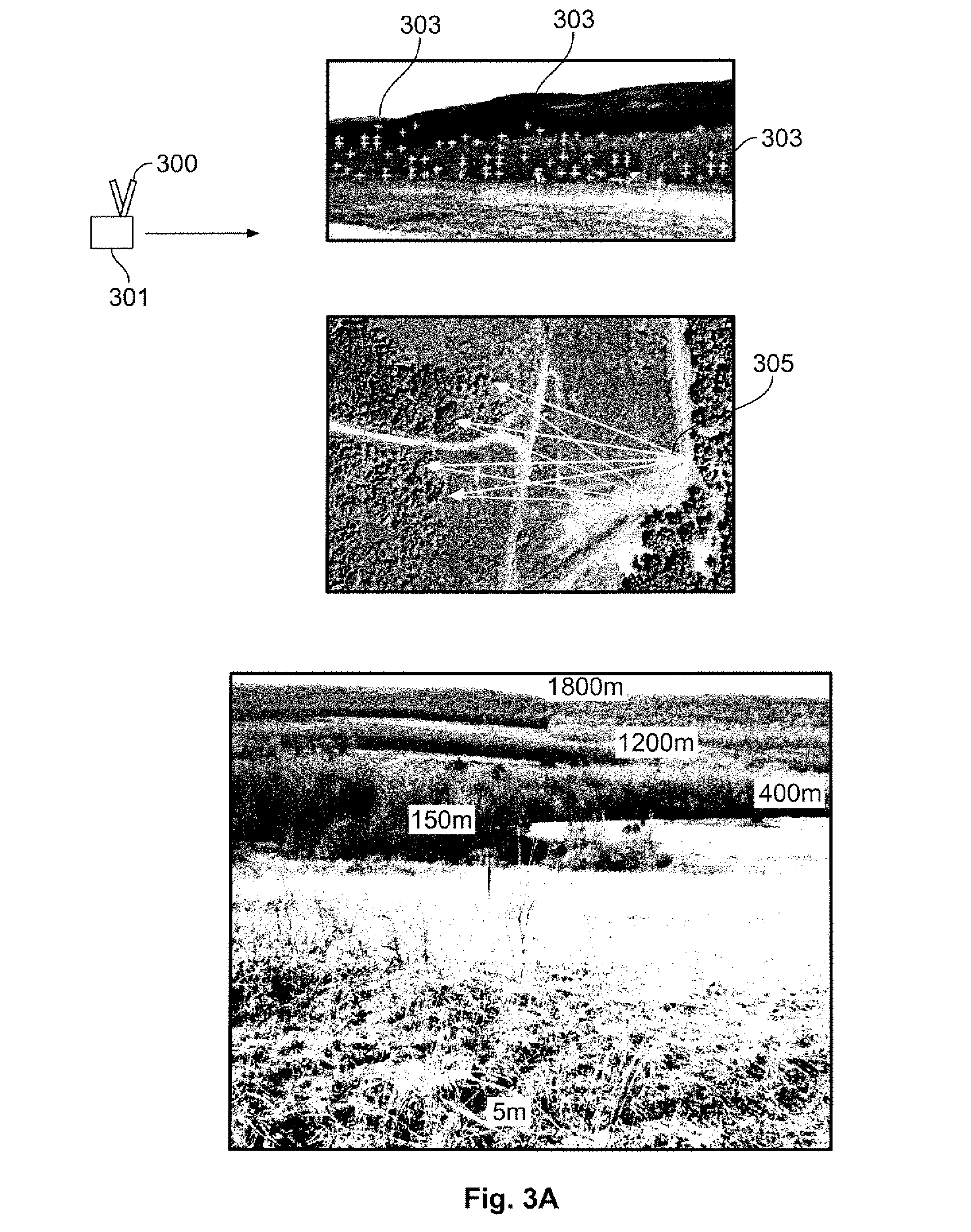System and Method for Providing Mobile Range Sensing
a mobile range and sensing technology, applied in image analysis, image enhancement, instruments, etc., can solve the problems of requiring high power, affecting the accuracy of the image, and using images from a moving platform
- Summary
- Abstract
- Description
- Claims
- Application Information
AI Technical Summary
Problems solved by technology
Method used
Image
Examples
Embodiment Construction
[0018]The basic scenario in the present invention is that images of essentially the same scene are captured from multiple viewpoints. The images are captured preferably due to one camera mounted on a moving platform or alternatively due to multiple cameras mounted on the moving platform that are moving through the scene. So, if the relative camera positions are known, the present invention proposes to rectify the images (correct them for differing camera orientations) prior to computing the stereo disparity (through image-matching techniques) to determine the range to objects in the scene. Referring to FIG. 1, there is shown a flow diagram of the procedure of visual means of the sensing system in accordance with an embodiment of the present invention. A series of raw images are captured at step 102 from the camera (not shown) mounted on a moving platform. Note that these images are captured at different camera locations or at different camera separations relative to the first camera...
PUM
 Login to View More
Login to View More Abstract
Description
Claims
Application Information
 Login to View More
Login to View More - R&D
- Intellectual Property
- Life Sciences
- Materials
- Tech Scout
- Unparalleled Data Quality
- Higher Quality Content
- 60% Fewer Hallucinations
Browse by: Latest US Patents, China's latest patents, Technical Efficacy Thesaurus, Application Domain, Technology Topic, Popular Technical Reports.
© 2025 PatSnap. All rights reserved.Legal|Privacy policy|Modern Slavery Act Transparency Statement|Sitemap|About US| Contact US: help@patsnap.com



